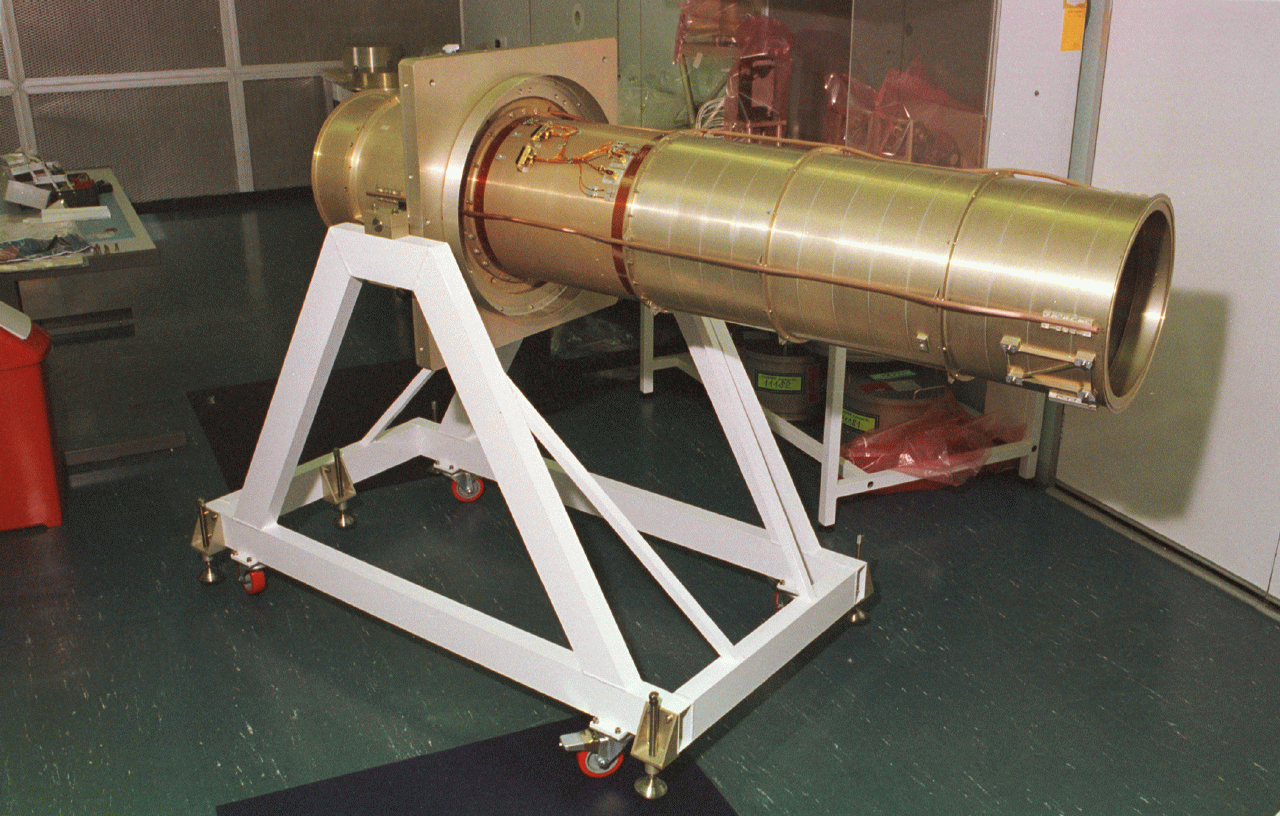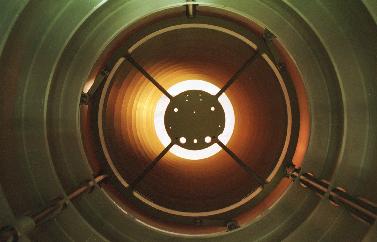The telescope tube and baffle - XMM-Newton
The telescope tube and baffle
The XMM-OM uses a Ritchey Chretien telescope design modified by field flattening optics built into the detector window. The f/2 primary mirror has a 0.3 m diameter and feeds a hyperboloid secondary with modifies the f-ratio to 12.7. A 45° flat mirror located behind the primary can be rotated to address one of the two redundant detector chains. In each chain there is a filter wheel and detector system.

Completely mounted OM telescope in testing
The OM telescope module consists of a stray light baffle and a primary and secondary mirror assembly, followed by the detector module, detector processing electronics and telescope module power supply unit. The separation of the primary and secondary mirrors is critical to achieving the image quality of the telescope. The separation is maintained to a level of 2 microns by invar support rods that connect the secondary spider to the primary mirror mount. Heat generated by the detector electronics is transferred to the baffle by heat pipes spaced azimuthally around the telescope, and radiated into space. In this way the telescope module is maintained in an isothermal condition, at a similar temperature to the mirror support platform. This minimizes changes in the primary/secondary mirror separation due to thermal stresses in the invar rods. Fine focussing of the telescope is achieved through two sets of commandable heaters. One set of heaters is mounted on the invar support rods. When these heaters are activated, they cause the rods to expand, separating the primary and secondary mirrors. A second set of heaters on the secondary mirror support brings the secondary mirror closer to the primary when activated. The total range of fine focus adjustment available is +- 10 microns.

OM telescope tube with baffle in testing

This is a view down the telescope tube showing the secondary mirror support and the baffle. Note how the brightness decreases as the light is absorbed by the baffle.
Photos courtesy of Mullard Space Science Laboratory, UK.
- Removed a total of (1) style text-align:center;
- Converted a total of (2) center to div.








































 Sign in
Sign in
 Science & Technology
Science & Technology